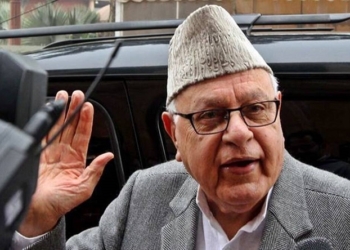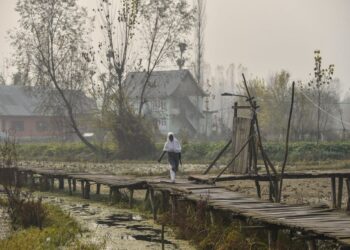Eggs have always been considered to be a standard safe food. Few people realise that every egg is different, and some may not be fit to eat at all.
An egg is made up of albumen, yolk and a porous shell made of calcium carbonate. The internal ingredients of an egg can be altered so that the natural composition changes by manipulating the feed of the hens. For instance, in Japan Omega 3 and iodine have been introduced into the eggs.
This means that the quality of the egg depends largely on the food given to the egg layer, and the conditions she is kept in. It is affected by many factors, before and after its laying. Everything from the weather, type of feed given to the hen, amount of water consumed by her, cleanliness of the surroundings, number of hours that she spends in daylight and even the way she breathes, can drastically change the composition of the egg. The way an egg is handled, before it reaches your plate, could make it inedible.
On average, a chicken egg should contain about six grams of protein and six grams of fat. To produce this level, it is essential that a laying hen receives a balanced diet, with adequate levels of protein, carbohydrates, fat, vitamins and minerals. Experts recommend a balanced ration containing 16 to 18 percent protein and approximately 3½ percent calcium, to promote strong eggshells. Laying chickens also require a constant supply of fresh, clean water, as water comprises more than half of an eggs volume.
The fact, that an eggs natural composition can be manipulated, is well known to commercial poultry farmers. Chemicals are added to the food so that they produce eggs that are better looking and last longer. Baking soda and ammonium chloride are commonly added as dietary supplements to improve eggshell quality. Potassium chloride is mixed with their water as it makes hens thirstier. The use of antibiotics is also common with Indian farmers, pumping hens with these from the day they are born.
The best eggs really come from hens that spend their days outdoors in a natural environment and scratch for insects, seeds and earthworms in the soil. The eggs you buy do not come from these hens. To ensure high production, with a minimum of money, all hens are kept captive in small crowded cages with a strict controlled environment, no sun, no fresh air and water, chemical food and antibiotics. They are kept under continuous lighting so that they lay more eggs daily. How nutritious would the product of such a stressed body be? India has particularly poor egg quality.
Indian poultry farms are known to be some of the worst in the world, with very low health and safety standards and little regard for public health concerns. Investigations at poultries show hens covered with sores, badly fed, sitting in their own faeces, covered with spiderwebs, full of mites and lice, fed cannibalistically with the dead bodies of their own kind, cardboard, marble chips, fish meal and grain laced with antibiotics and pesticides. This destroys the nutritional quality of the egg.
Unhygienic rearing practices, and lack of quality control measures, is an open invitation for egg contamination. Despite India being one of the three largest egg producers in the world, with 47 billion a year, they do not meet international standards, and Indian eggs are rejected for export due to chemicals in and outside the shells.
Thick albumen, plump yolks and hard shells are what you should look for superficially. Do buyers look at the thickness of the shell ? Because a thin shell means that the mother has been ill. Diseases like infectious bronchitis, Newcastle disease, avian influenza and egg drop syndrome, affect the shell quality. Infectious bronchitis virus causes soft/rough shelled eggs, discolouration and wrinkling of the shell. The egg, as a result of disease, has pale egg yolks, runny egg whites and rough shells. A deformed eggshell means the chicken has had a number of serious diseases.
During summer, the hen, already in a small stuffy cage, reacts by panting in order to cool herself. This produces a condition termed “respiratory alkalosis”. The pH of the blood becomes alkaline and the availability of calcium for the eggshell is reduced. The eggshell becomes thin shelled. The thickness of the shell plays a vital role in preventing bacterial penetration. Thus eggs with thin shells are more prone to microbial attack.
An egg should have phosphorous, zinc, Vitamins A, B 6 ,B 12, folic acid, thiamine and Vitamin D. During heat stress hens eat less and calcium intake is reduced as a direct consequence of reduced feed intake. This causes an elevation of phosphorous in the blood. Calcium and phosphorus balance is critical for proper eggshell quality. But high levels of phosphorus in the blood inhibit the formation of calcium. When the Calcium and phosphorus ratio is out of sync, zinc and manganese decreases. Vitamin D decreases in a sick bird. So, the egg is left with very little in it. Due to the lack of exercise in these caged birds, the fat component increases, and then the fatty acid composition in the yolk changes from healthy to unhealthy.
In free range poultries which simply means that they are not in cages, crowded on the floor chickens have a hierarchy. Those down the chain often lay whiter shelled eggs, with poor internal quality, due to the stress that they are under.
What hens eat is of crucial importance. Every hybrid layer bird should have a specially devised diet. That does not happen in India. Feed nutrients are used by poultry owners without any knowledge of their nutritive value. They feed the cheapest food to their hens. If soya meal is expensive, they will replace it with cotton seed defatted cake and guargum, Nothing of these has any nutritional value.
When you eat eggs sourced from poultry raised on antibiotics and growth promoters, you ingest antibiotic-resistant bacteria. Heat cannot break down the antibiotic residues that remain within the eggs. When you fall sick, no antibiotic will be able to work on your disease. India has the largest number of people resistant to antibiotics, and the main reason is that our chicken/eggs carry them.
A 2010 study, by S. Dey and S.K. Dwivedi from the Indian Veterinary Institute, found lead and cadmium in eggs. Their study noted that consumption of contaminated eggs could lead to heavy metal poisoning in children, resulting in IQ deficiencies and even mental retardation.
In a recent study done in and around Hyderabad, eggs were collected from urban retail outlets and directly from poultry farms. Salmonella bacteria was commonly found on shells and inside the eggs collected from urban retail outlets. Salmonella infection is a bacterial disease that affects the intestinal tract. Typhoid fever, food poisoning, gastroenteritis, enteric fever, are all types of Salmonella infection. It is linked to contaminated water or foods, especially meat, poultry, and eggs. The FSSAI laws state that the eggshells must be free of blood rings, must not be soiled, or have faecal matter, and they must not be cracked. They have laid down the hygiene parameters that must be observed during production, processing and handling, which includes sorting, grading, washing, drying, treatment, packing, storage and distribution. They emphasise on storage conditions, like moisture and temperature, so as to reduce microbial contamination.
No one even knows the laws. Poultry farmers, traders, exporters and even consumers, are unaware of the health risks of egg contamination.
Abroad, every batch of eggs has to have the name of the poultry where they have come from. That is how the food inspectors were able to determine so quickly that the eggs, with fipronil pesticide in them, came from 18 poultries in Holland. In India you have no idea where the egg comes from. Egg consumption is encouraged by the Government. This makes their quality, and contamination, a major food safety issue.
Follow this link to join our WhatsApp group: Join Now
Be Part of Quality Journalism |
Quality journalism takes a lot of time, money and hard work to produce and despite all the hardships we still do it. Our reporters and editors are working overtime in Kashmir and beyond to cover what you care about, break big stories, and expose injustices that can change lives. Today more people are reading Kashmir Observer than ever, but only a handful are paying while advertising revenues are falling fast. |
| ACT NOW |
| MONTHLY | Rs 100 | |
| YEARLY | Rs 1000 | |
| LIFETIME | Rs 10000 | |








